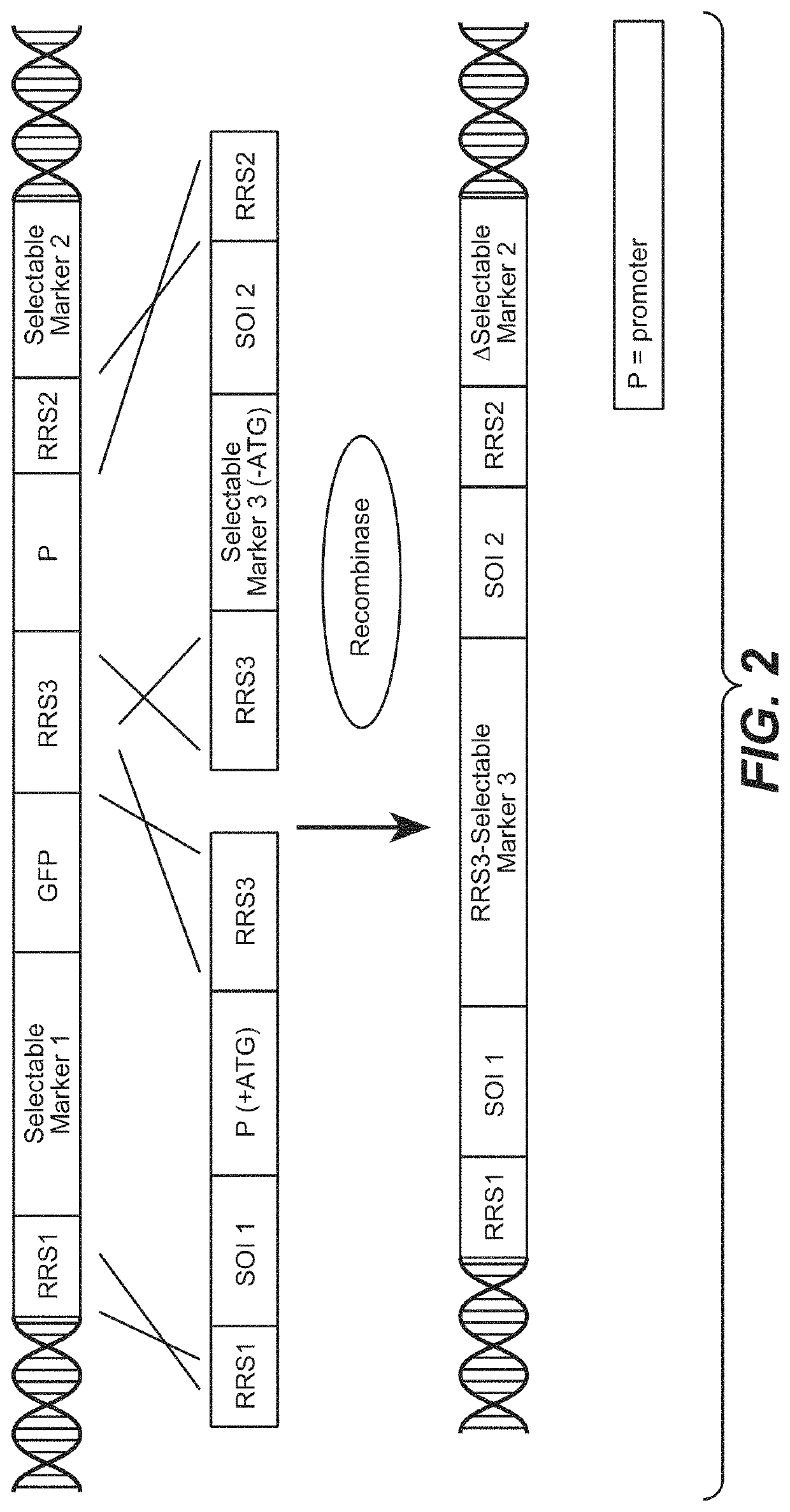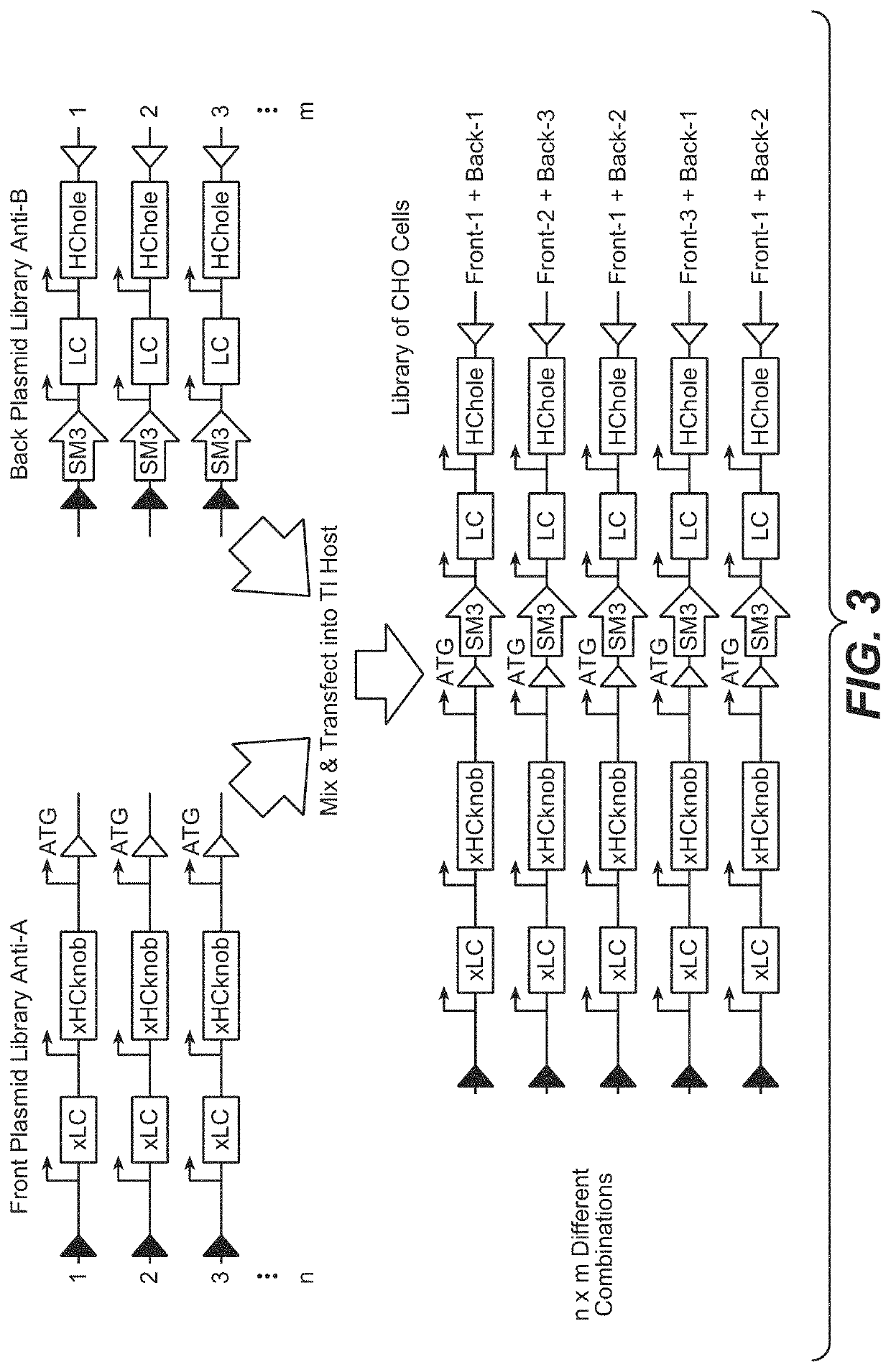Multispecific antibody screening method using recombinase mediated cassette exchange
a cassette exchange and multi-specific antibody technology, applied in the field of cell line generation, can solve the problems of complex interpretation of screening, unable to find the right combination of fabs capable of exerting the desired function, and the complexity of product mixtures is even higher, rendering screening almost impossibl
- Summary
- Abstract
- Description
- Claims
- Application Information
AI Technical Summary
Benefits of technology
Problems solved by technology
Method used
Image
Examples
example 1
[0261]General Techniques
[0262]Recombinant DNA Techniques
[0263]Standard methods were used to manipulate DNA as described in Sambrook et al., Molecular Cloning: A Laboratory Manual, Second Edition, Cold Spring Harbor Laboratory Press, Cold Spring Harbor, N.Y, (1989). The molecular biological reagents were used according to the manufacturer's instructions.
[0264]DNA Sequence Determination
[0265]DNA sequencing was performed at SequiServe GmbH (Vaterstetten, Germany)
[0266]DNA and Protein Sequence Analysis and Sequence Data Management
[0267]The EMBOSS (European Molecular Biology Open Software Suite) software package and Invitrogen's Vector NTI version 11.5 were used for sequence creation, mapping, analysis, annotation and illustration.
example 2
[0268]Generation and Analysis of a Combinatorial 2×2 CrossMAb Expression Library
[0269]Two front plasmids, F_1 and F_2, coding for crossed antibody chains of two different antibodies specifically binding to human antigen A and two back plasmids, B_1 and B_2 coding for uncrossed antibody chains of two different antibodies specifically binding to human antigen B were simultaneously transfected into TI CHO host cell line (see table below). FIG. 4 shows the maps of front plasmid F_1 and back plasmid B_1. Front plasmids F_1 and F_2 differ from each other in the amino acid sequences of VL and VH. The same is true for and back plasmids B_1 and B_2.
PlasmidPlasmid typeSpecificityType of CrossMAb genesF_1frontantigen AxHCknob, xLC(first VH / VL pair)F_2frontantigen AxHCknob, xLC(second VH / VL pair)B_1backantigen BLC, HChole(third VH / VL pair)B_2backantigen BLC, HChole(fourth VH / VL pair)xHCknob: heavy chain with domain crossover and knob mutationsxLC: light chain with domain crossoverLC: light chai...
PUM
| Property | Measurement | Unit |
|---|---|---|
| size | aaaaa | aaaaa |
| homogenous | aaaaa | aaaaa |
Abstract
Description
Claims
Application Information
 Login to View More
Login to View More - R&D
- Intellectual Property
- Life Sciences
- Materials
- Tech Scout
- Unparalleled Data Quality
- Higher Quality Content
- 60% Fewer Hallucinations
Browse by: Latest US Patents, China's latest patents, Technical Efficacy Thesaurus, Application Domain, Technology Topic, Popular Technical Reports.
© 2025 PatSnap. All rights reserved.Legal|Privacy policy|Modern Slavery Act Transparency Statement|Sitemap|About US| Contact US: help@patsnap.com



